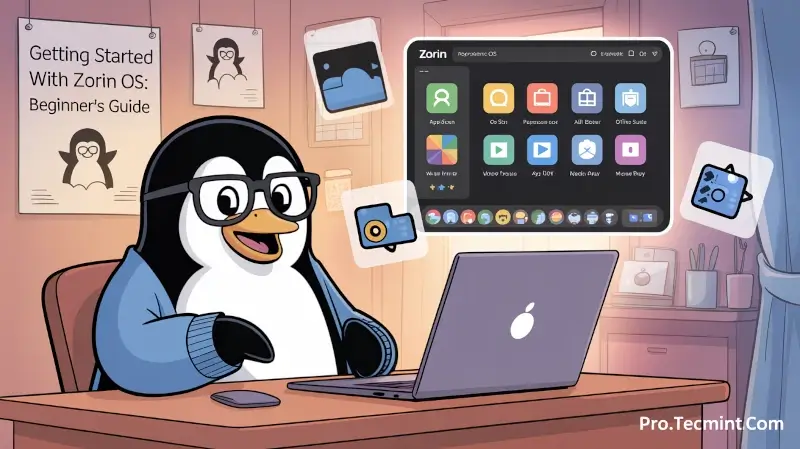3. Zorin OS
In this chapter, you’ll learn how to install Zorin OS, explore its beginner-friendly interface, use Zorin Appearance to personalize your desktop, and install essential apps to get started right away.

If you’ve been following this series, we’ve already explored Ubuntu and Linux Mint, two of the most popular Linux distributions that are great for beginners.
Both of them are solid choices, but what if you want something that feels even more familiar if you’re coming from Windows? That’s where Zorin OS comes in.
Zorin OS is designed specifically to make the switch from Windows (or even macOS) as smooth as possible, as it offers a clean, it’s easy to use interface, and it comes packed with tools that let you get started right away.
In this post, we’ll take a closer look at what makes Zorin OS special, how it compares to Ubuntu and Linux Mint, and why it’s considered one of the most beginner-friendly Linux distributions out there.
Zorin OS History
Zorin OS was first released in 2009 by a small team of developers from Ireland, their main goal was simple: create a Linux distribution that Windows users could feel comfortable with right away.
Over the years, Zorin OS has grown steadily and started as a Windows-like Linux for beginners, but now it also offers editions for older computers, students, and even professionals who want extra features. Despite these changes, the core mission has stayed the same: making Linux accessible and stress-free for newcomers.
Compared to Ubuntu and Linux Mint, Zorin OS takes extra steps to mimic the Windows experience, which makes it stand out for users who are hesitant about switching from Windows.
Zorin OS Editions
Zorin OS comes in a few different editions, so you can pick the one that fits your needs and computer:
- Zorin OS Core - This is the standard edition that comes with a clean interface, essential apps pre-installed, and all the basic tools you need to start using it.
- Zorin OS Lite - If you have an older computer or a system with limited resources, then go for Lite edition, as it uses a lighter desktop environment that runs smoothly even on older hardware.
- Zorin OS Pro - This is the premium edition with extra features, apps, and layouts, which is ideal for people who want a little more polish, customization, and professional tools out of the box.
- Zorin OS Education - Designed for students and schools, this edition comes with learning tools, educational software, and apps to help with studying and teaching.
The great thing about Zorin OS is that no matter which edition you choose, it’s beginner-friendly and designed to make your transition from Windows or macOS as smooth as possible.
Desktop Environment & Interface
One of the biggest reasons Zorin OS feels so familiar to new users is its desktop environment, which is built to look and behave like Windows, so you won’t feel lost when you switch.
Zorin OS Core uses a GNOME-based desktop, which is modern, clean, and easy to navigate. For the Lite edition, it uses XFCE, a lightweight desktop that’s perfect for older computers but still simple and attractive.
A standout feature is the Zorin Appearance app, which lets you change the layout of your desktop to look like Windows, macOS, or even a classic Linux style, all with just a few clicks.
This focus on a familiar and customizable interface is what makes Zorin OS especially appealing to Windows users and beginners who want a smooth transition into Linux.
For this guide, we’ll be using Zorin OS Core 17.3, which is released on March 26, 2025, is the latest version of Zorin OS, a Linux distribution designed to provide a familiar and user-friendly experience, especially for those transitioning from Windows.
What’s New in Zorin OS Core 17.3?
Here are some highlights of what’s new in Zorin OS Core 17.3: